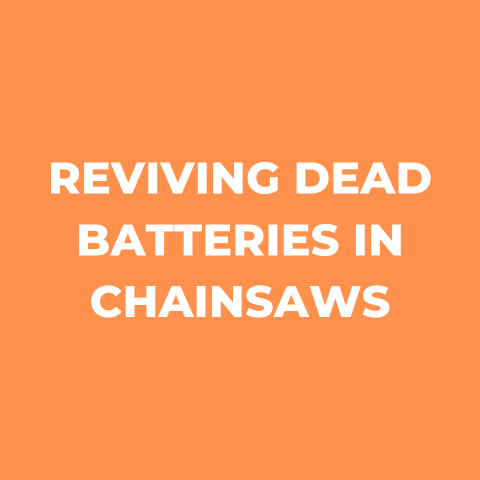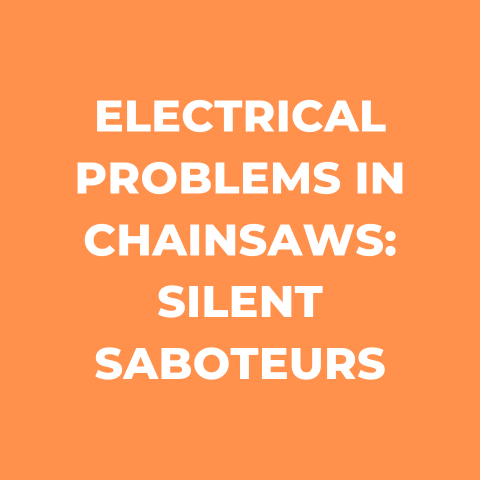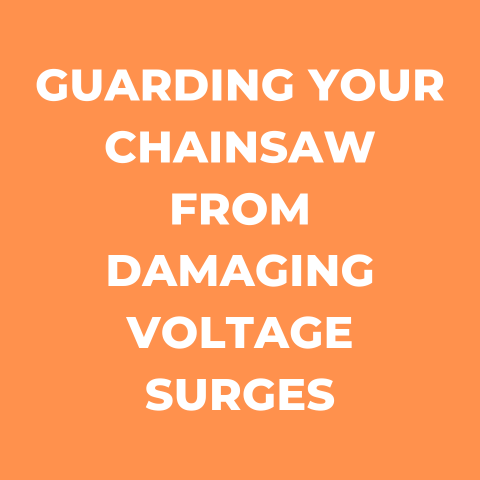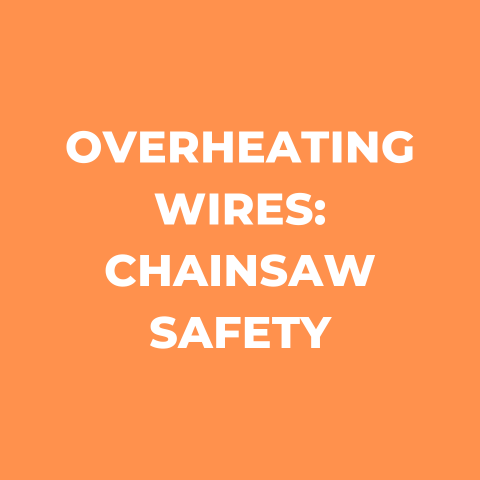Wire Safety Tips for Electric Chainsaws: The Shocking Truth
Operating a chainsaw, whether gas-powered or electric, comes with inherent risks that every user should be aware of. However, electrical issues pose a unique hazard for those using electric chainsaws. Avoiding electrocution or shock requires knowledge of potential problems, practical solutions, and preventative measures – the focus of this guide.
Why Electric Chainsaw Safety Matters
While portable and convenient, electric chainsaws have exposed wiring and connections to an electrical source. Damaged cords, faulty outlets, and improper handling can lead to dangerous shocks. Safety must be the top priority.
Threats include:
- Damaged or faulty power cords
- Faulty extension cords
- Wet/damp operating conditions
- Improper cord management
- Poor electrical connections
- Frayed wiring inside the chainsaw
Minor shocks can cause injury. Serious shocks can result in severe burns, cardiac arrest, and death. Safety awareness and preventative care reduces these risks.
Common Electrical Issues in Electric Chainsaws
Several issues are responsible for electrical failures and shocks. Being able to identify them is the first step towards a solution.
Power Cord Damage
Power cords take the most abuse. Stepping on them, yanking them, and dragging them over rough surfaces slowly degrades the insulation. Eventually, bare wiring becomes exposed, posing a threat of shock and electrocution. Damaged areas may be visible, like cracks and abrasions. But often, damage happens underneath the insulation.
Watch for:
- Visible cracks, cuts, or scrapes in the cord insulation
- Exposed copper wiring poking through insulation
- Brittle, stiff, or overly soft areas in the cord
- Splices, tape, or amateur repairs along the cord length
- Sparking, sizzling sounds, or flickering lights when running
- Tingling or mild shocks when handling the cord
A damaged cord must be repaired or replaced immediately. Regular inspections detect issues early.
Faulty/Mismatched Extension Cords
Extension cords pose a weak link in the electrical chain. Mismatching cord length, gauge, and load rating to a chainsaw often overloads and damages cords. Excessive heat can melt insulation and expose wiring.
Watch for:
- Hot spots or melted areas on an extension cord
- Cracking/brittleness in the insulation
- Discolored/darkened areas on the plugs
- Frequently tripped breakers when running the saw
- Damage where the cord connects to the saw or outlet
Always match cord specs to chainsaw requirements. Inspect for damage prior to each use. Replace worn or inadequate extension cords.
Moisture Exposure
Using any electrical tool in wet conditions significantly increases shock risk. Water carries current, raising the chances of electrocution.
Chainsaws quickly draw in moisture when:
- Used in rain or snow
- Used on wet ground
- Exposed to splashing water/liquids
- Stored in damp locations
- Powered from wet extension cords
If moisture invades the internal wiring, the chainsaw becomes a hazard until completely dried out and repaired. Never attempt operation until electronics are checked by a professional.
Poor Electrical Connections
Like any plugged-in tool, loose wiring connections can disrupt power flow in a chainsaw. Vibration gradually loosens connections inside the housing and at the plug/outlet.
This manifests as:
- Intermittent power loss
- “Flickering” chain movement
- Overheating of plugs/outlets
- Unusual buzzing/humming from inside the saw
Periodically check outlets and connections. Clean contacts, tighten screws, and replace old outlets as needed. Have internal wiring inspected annually.
Frayed Internal Wiring
Inside an electric chainsaw, wiring connects the motor, triggers, safety switches, and power cord. Constant high-speed vibration fatigues insulation over time. Bare spots make contact with metal components, causing shorts and shock hazards.
Symptoms include:
- Chainsaw failing to start
- Intermittent power loss
- Power loss with certain motor positions
- Buzzing, arcing sounds internally
- Tingling sensation in the handles
Annual inspections should check for damaged wiring. Replace damaged harnesses immediately.
Step-by-Step Electrical Troubleshooting
When an electrical issue is suspected, follow a systematic process to isolate, diagnose, and correct the problem. Safety first requires disconnecting power sources during repairs.
1. Check The Power Cord
Unplug the chainsaw and inspect the entire cord length closely. Look for:
- Cuts, abrasions, or cracks in insulation
- Exposed copper conductors
- Brittle, stiff, or overly soft spots
- Bulges or lumps indicating internal damage
Perform an additional check with the power disconnected. Use a non-contact voltage tester along the cord. Any sign of current indicates damage. Mark bad spots with tape for future repair.
2. Inspect The Extension Cord
Similarly, closely inspect every inch of an extension cord for overheating damage. Crushed, melted, or discolored sections are red flags.
Check the “plugged in” portion more closely. Faulty cords often fail at joints between cord segments. Heat damage also concentrates near plugs.
Perform a continuity test. With the cord unplugged, a multi-meter should show full continuity between the prongs. If not, the cord is damaged internally.
3. Check Electrical Connections
Inspect both the chainsaw plug and extension cord plugs. Look for:
- Loose, bent, or corroded prongs
- Melted housings
- Cracked or burned insulation
- Broken/loose internal connections
Attempt to rock or twist each plug in its receptacle. Any looseness indicates a faulty connection point.
Use a non-contact tester around outlets while plugged in. Voltage outside the receptacle indicates a faulty outlet.
4. Check For Internal Damage
Opening up a chainsaw exposes dangerous moving parts and high voltage connections. This should ONLY be done by a qualified technician.
They will check:
- Connections to the trigger, switches, and motor
- Insulation on internal wiring harnesses
- Signs of water damage/corrosion
- Heat discoloration of components
- Condition of brushes and connections in the motor
Unless equipped for these checks, users should seek professional assistance rather than risk exposure to hazardous voltages inside.
5. Test Repaired Chainsaws Thoroughly
Before regular operation, test a repaired chainsaw extensively for proper function and no electrical issues. Conduct tests with appropriate gloves, eye, and face protection:
- Inspect repairs carefully. No exposed conductors should be visible.
- Check power cord continuity again. Verify no shorts are present.
- Operate the chainsaw briefly in multiple positions, checking for intermittent power loss.
- Listen and feel for any sparking or arcing sensations.
- Run a full cutting test for at least 60 seconds under load.
- Monitor cord and housing temperature. Any significant heat indicates an issue.
- If equipped, use a non-contact tester around the chainsaw body while running to detect any stray voltage.
Problems detected during testing means additional diagnosis and repair is necessary. The chainsaw should only go back into use once it passes all tests without anomaly.
Preventing Electrical Problems
Prevention plays a key role in chainsaw safety. While not all faults can be avoided, many result from improper use and maintenance.
Use Code-Approved Cords Only
Don’t risk aftermarket or knock-off cords that don’t meet electrical ratings for your chainsaw. Stick to UL/ETL-certified cords from reputable brands, in new/undamaged condition.
Match amperage and length ratings closely to the chainsaw manufacturer’s recommendations. Under-rated cords overheat. Overly long cords lose power.
Inspect Frequently
Make cord inspections part of pre-use preparations:
- Check entire cord length for damage
- Inspect each connection point
- Test for continuity/shorts if damage is suspected
Also check cords after use for any new cuts, scrapes, or melted areas indicating problems.
Avoid Extension Cords When Possible
The extra connection point in an extension cord reduces reliability. Use the shortest cord feasible to minimize risks. Connect the chainsaw directly to an outlet whenever convenient.
Keep Cords Away From Heat/Chemicals
Avoid letting power cords contact:
- Hot exhaust/engines that can melt insulation
- Oil, gas, solvents that degrade the insulation
- Sharp objects that could pierce protective insulation
When unplugged, neatly coil and store cords away from damage.
Clean Electrical Connections
Regularly clean chainsaw plugs, extension cord plugs, and outlets with contact cleaner spray. Prevent corrosion, carbon buildup, or loosening connections over time.
Never Use In Wet Conditions
Assume water and electricity don’t mix. Never intentionally expose a running chainsaw, cord, or outlet to moisture. Use






